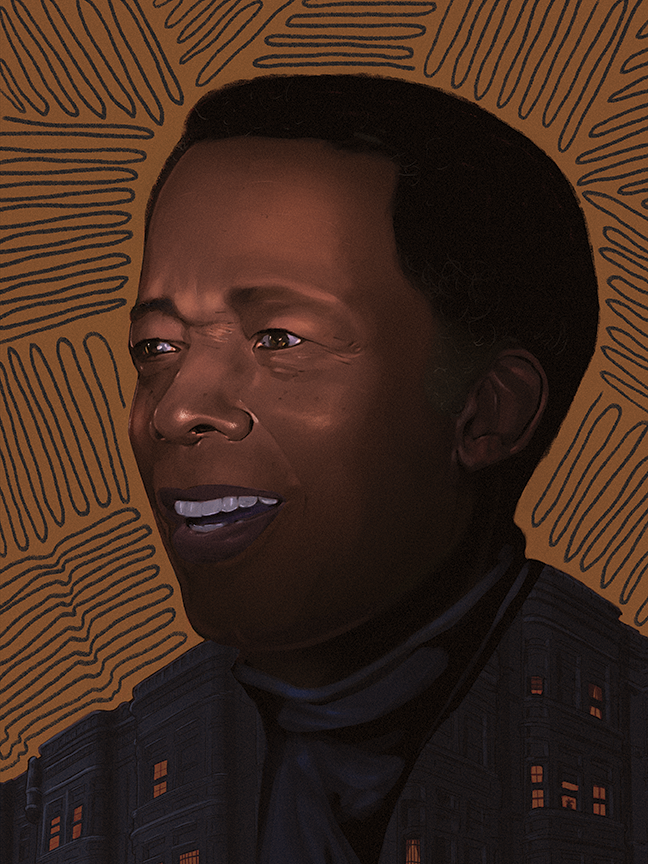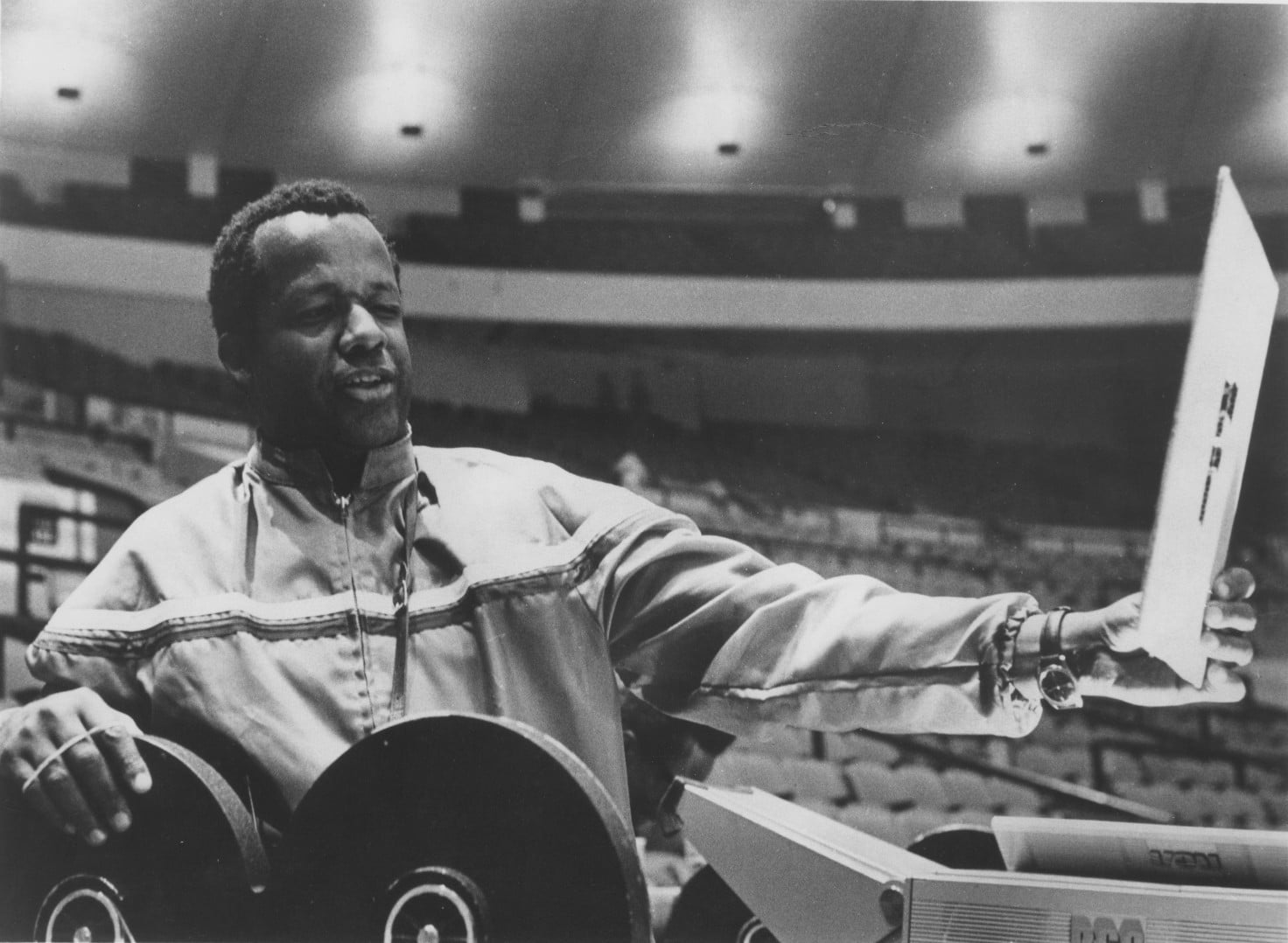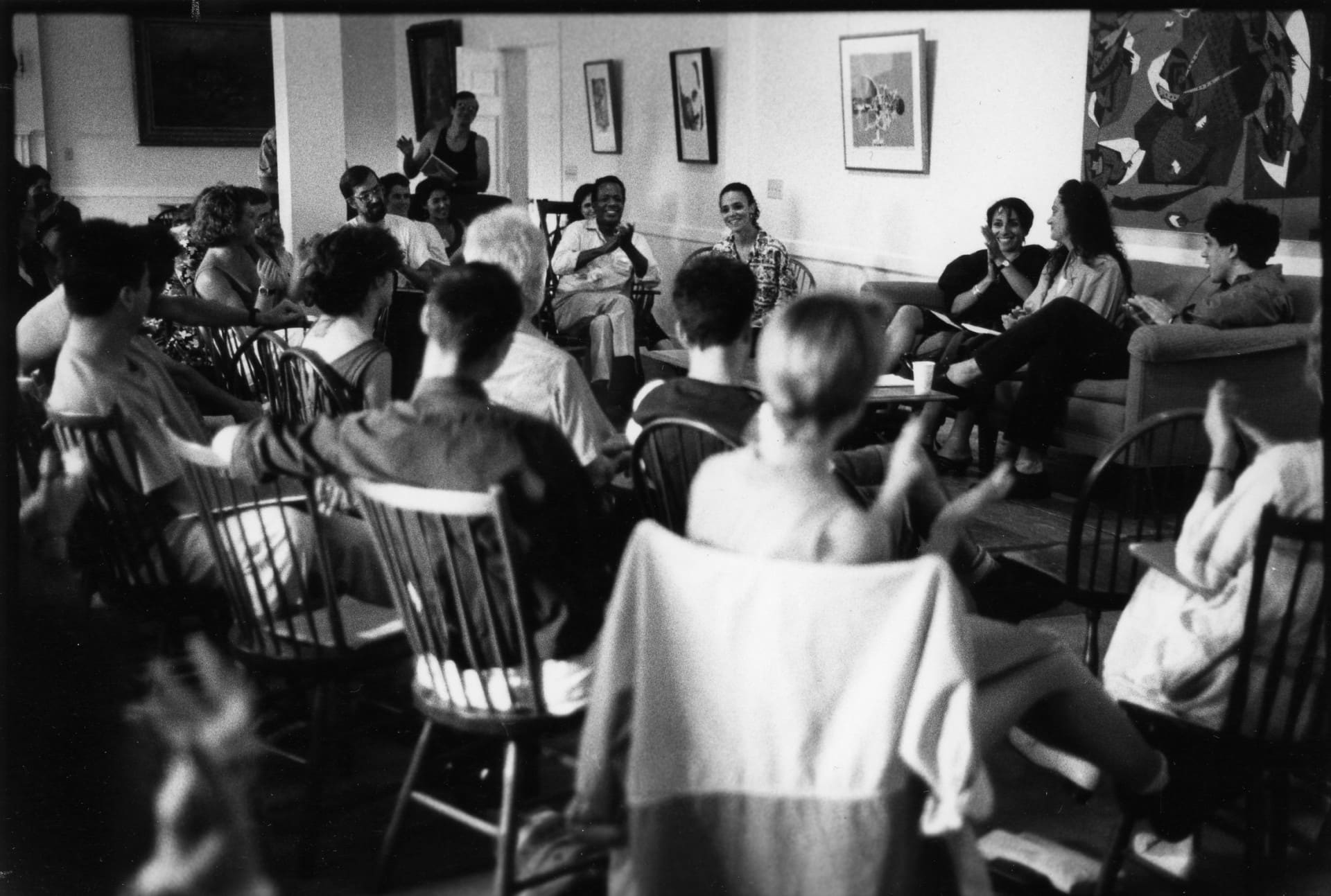As Claude McKay wrote about the few moments of calm in Harlem before the evening’s last revelers yield to the commerce of the day, the 135th Street branch of the New York Public Library was bathed, as it still is today, in light by the dancing orange sun piercing around the sharp corners of Manhattan rooftops and sculpted trim of row houses on Strivers’ Row. The faint aroma of broken hooch bottles, sweat-warmed pomade, and polished trombones gave way to the early morning wash (laundry), the grinding wheels of the Interborough Rapid Transit steel subway cars against wooden rails, and freshly baked yeast breads. Seventh Avenue was appropriately nicknamed “heaven” during the Harlem Renaissance. This is the Harlem that sang lullabies to William “Bill” Greaves as a child. It was brimming with possibilities. He was born in 1926, one year after the Division of Negro Literature, History, and Prints––a predecessor to the Schomburg Center––opened in the 135th Street Library.
By the time Bill Greaves was a student at City College in the early 1940s, he probably saw a resilient Harlem from his vantage point on campus, up the hill on Convent Avenue. Harlem had endured the Clutch Plague of his coming-of-age, and the loud drum of the Second World War; the neighborhood swelled again with the second wave of the Great Migration of Black people, who came from the American South and the Caribbean to fill wartime factories and flee the domestic terrorism of Jim Crow.
The basement of the library on 135th Street between the old ‘heaven’ and Lenox Avenue had been transformed into the American Negro Theater (ANT), operated by Abram Hill and Frederick O’Neal. Hill and O’Neal mentored a generation of artists and activists that would transform the American landscape of film, television, and theater, including Ruby Dee, Ossie Davis, Sidney Poitier, Harry Belafonte, Isabel Sanford, Alice Childress, Hilda Simms, and Greaves. They sought to produce plays that “honestly and with integrity interpreted, illuminated, and criticized contemporary Black life and the concerns of the Black people.”1 This training can be seen as the backbone of Greaves’s lifework as a filmmaker at a time when creative and political voices were softened by the threat of McCarthyism.
Bill Greaves’s experience at the ANT cannot be separated from his filmography, from his first appearance on camera as Archie in the feature film Lost Boundaries (1949) to his 1991 documentary about diplomat and 1950 Nobel Peace Prize recipient Ralph Bunche to a posthumous collaboration with Darius Clark Monroe, in which Monroe reassembled unreleased footage produced by Greaves in Black 14 (2018). In his work there is a throughline of integrity and honed perception of the Black experience in America that considers multiple gazes––an extension of the ethos practiced by his mentors and peers at the ANT.


